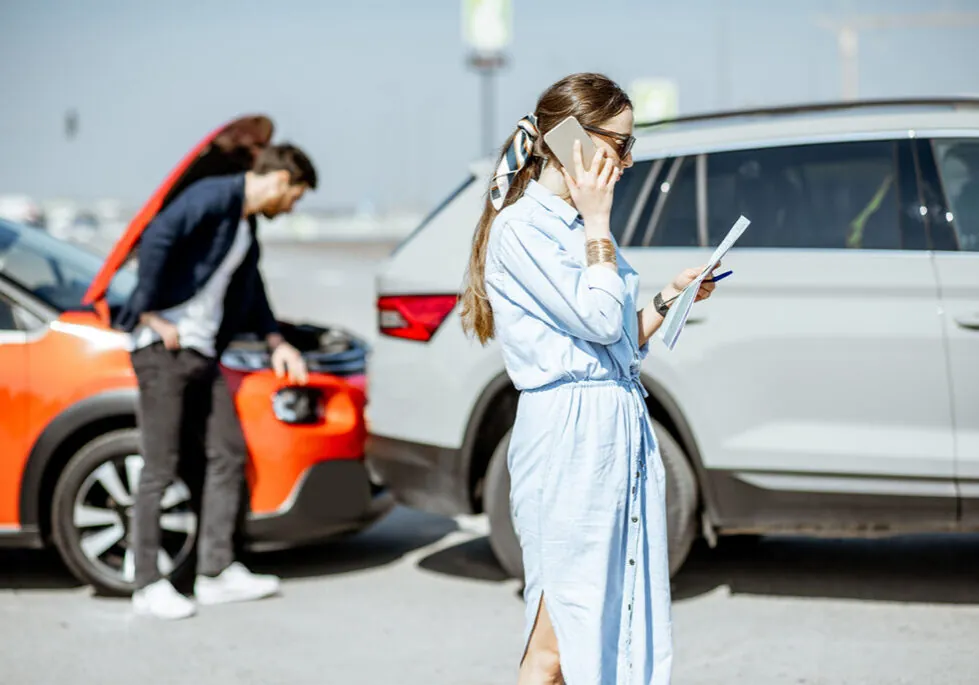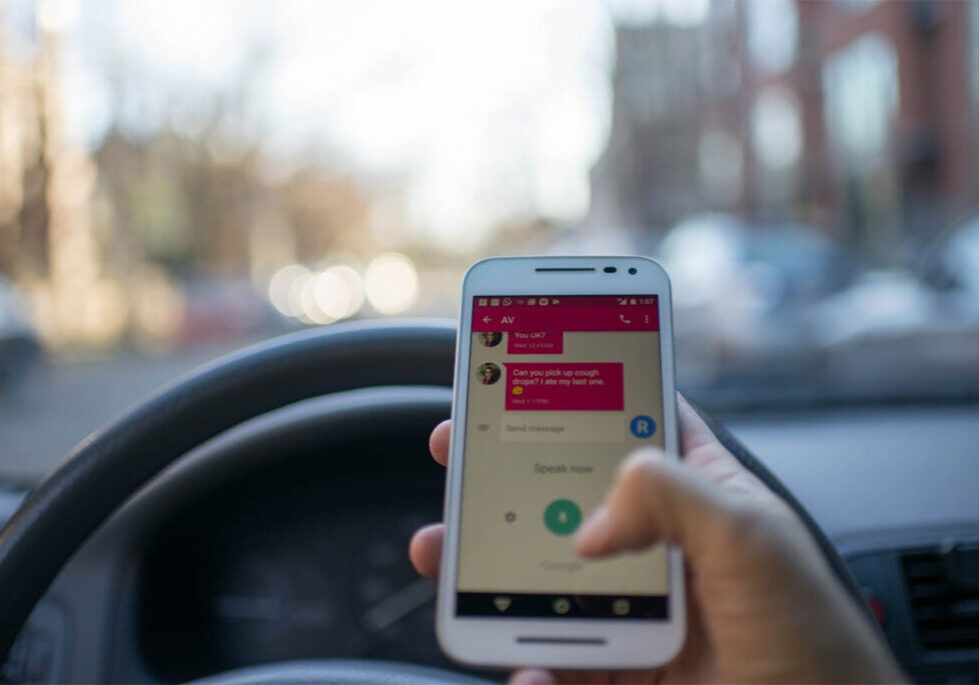Distracted driving is any activity that causes a driver to lose focus on the road. Using a phone while driving is a leading cause of distracted driving. Approximately 1.6 million car crashes related to phone use while driving occur each year in the U.S.
Driving safely requires your full attention. Using a phone to text, make calls, get directions, or for any other matter is risky for you and others on the road.
Here is what you should know about distracted driving and why you should not use your phone while driving.
There are three types of distracted driving: visual, cognitive, and manual.
Visual distraction: A visual distraction is anything that pulls your eyes away from the road. Sending a text, tuning the radio, grabbing something off the floor, or even turning to talk with a passenger are all examples of a visual distraction. In each case, your eyes leave the road to focus on something else.
Cognitive distraction: A cognitive distraction is anything that distracts your mind from the task of driving. Have you ever daydreamed while driving? Or thought about work? Or thought about family? You may not realize it, but if your mind wanders while driving, you can lose all focus on the road.
Manual distraction: A manual distraction is anything that causes you to take your hands off the wheel or remove your foot from the pedals. Maybe your child in the backseat starts crying and you turn around to check on them. This is an example of manual distraction.
Texting and making phone calls while driving is a leading cause of distracted driving.
The Insurance Institute for Highway Safety (IIHS) says just shy of 10 percent of all drivers are using a cellphone while driving during any moment of the day. This means that if you are in traffic with 100 other drivers, ten of them are likely to be on their phone.
Using a phone while driving, or otherwise driving distracted, is dangerous and can increase the likelihood of a car accident. In the United States in 2019, 3,142 people died in motor vehicle crashes in which distraction was a contributing factor.
Crash risk is two- to six-times greater for those who use a cellphone while driving compared to drivers who are not distracted. Using a phone slows reaction time, increases lane deviations, and causes drivers to look away from the road for extended periods. Even drivers who manage to ‘multi-task’ and maintain at least some focus on the road while using their phone can suffer from inattention blindness, or an inability to process and react to objects on the road that they can clearly see.
Young adult drivers aged 16 to 29 are more likely to engage in distracted driving. One survey found that 40% of high school drivers use their phone to text or send an email while driving. More than one-in-four distracted drivers involved in fatal crashes in 2018 were young adults aged 20 to 29.
Consider this: using a phone while driving is a visual, cognitive, and manual distraction all at once.
Put the phone away. Do not text and drive. Follow the rules of the road. Always drive safely.
Twenty-four U.S. states have laws that ban drivers from using the phone while driving.
New York was the first state to ban handheld cellphone conversation by all drivers in 2001. Almost two dozen states now have similar hands-free driving laws. The act of texting while driving is banned in 48 states. In 2009, California put into law that drivers cannot hold cellphones while driving, but drivers can still operate their phone hands-free or via voice command.
There was a 41% reduction in cellphone use among drivers in Washington D.C. after a hands-free law was enacted. Phone use among drivers in the state of Connecticut declined 65% over the three years following the state enacting a hands-free law.
Hands-free laws have had at least some impact on the number of drivers who use a phone while driving, but the IIHS says there is no conclusive evidence that shows these laws have reduced the total number of cellphone-related car accidents in the U.S.
Vehicle infotainment systems help keep phones out of sight, but overly complex systems do not make it easier for drivers to focus on the road.
Car manufacturers have quickly adopted infotainment technology like Apple CarPlay and Android Auto, which enable drivers to pair their phone with the car so they can make hands-free calls, stream music, and get directions without touching their phone.
Voice-enabled infotainment systems have been found to help maintain focus on the road. Researchers say that drivers keep their eyes on the road for a greater proportion of the of time when using voice commands to complete infotainment-related tasks compared to doing the same tasks with their hands.
Not all voice operated infotainment systems are the same. Some vehicles are more complex than others. Multi-step voice commands—for example, the systems that require you to say information such as an address in multiple steps—are more distracting for the driver than one-step systems.
Infotainment systems enable drivers to access the features of their phone without the need to use their phone, which is a positive development. But, in general, overly complex infotainment systems can be equally distracting as a phone.
Here are five tips to help you limit distractions while you drive.
1 – Turn your phone off or put it on ‘Do Not Disturb’ mode. The next time you drive, take your phone out of the equation by turning it off completely or enabling ‘Do Not Disturb’ mode. Some phones have a setting which automatically turns on ‘Do Not Disturb’ when driving. Enabling that setting will make it so you don’t even have to think about silencing your phone when you get behind the wheel. However, it is understandable in today’s society that people talk to other people on their phone while driving.
2 – Prepare directions beforehand. Know where you are going and how to get there before you take the wheel. Put the directions into your phone before you drive. This way, you can set the phone aside and will not need to handle it while driving. Similarly, if your car has navigation built into the infotainment system, add the destination address before you leave.
3 – Adjust your seating position, mirrors, and climate controls before you leave. Take some time to get settled in for the car ride before you hit the road. Also, familiarize yourself with the car if you have not yet done so. All cars are different. Learn the dashboard layout and figure out what each button does so you aren’t distracted while driving. Read the owner’s manual for more information. This will ensure your comfort and reduce the likelihood of common car-related distractions.
4 – Set clear rules for any passengers. Talk to your passengers about eliminating distractions. Make sure you, as the driver, can stay focused on the road. Avoid distractions related to conversation or passenger movements.
5 – Be extra careful when eating and driving. The act of eating while driving can also prove distracting. If possible, wait until the car is parked at your destination before you eat. If you must eat while driving, ensure that the food is in a container and not likely to move around. This will enable you to reach down and grab the food without having to worry about where it is in relation to your seat.
Distracted driving can increase the risk of a car accident. Using a phone while driving is one of the leading causes of distracted driving. To stay safe, put your phone away and do your best to limit other distractions inside your car. Remember, always follow the rules of the road. Eliminating distractions and driving safely is the best way to ensure that you get to your destination.



